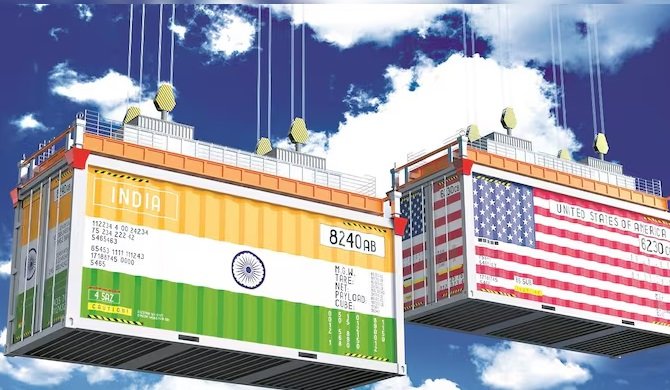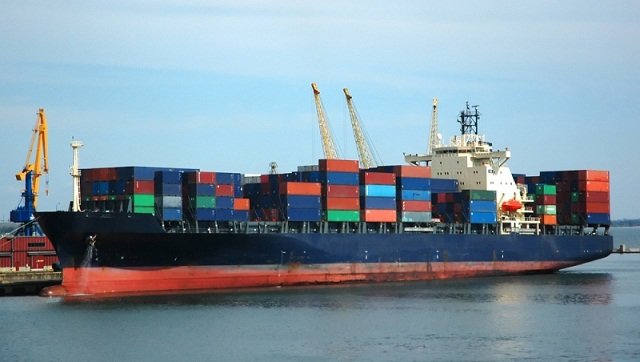Last Updated on August 26, 2025 8:59 am by BIZNAMA NEWS
By R. Suryamurthy
India’s export sector is staring at its steepest challenge in years after Washington imposed an additional 25% tariff on a wide range of Indian goods, effectively raising total duties to 50% from August 27.
The Federation of Indian Export Organisations (FIEO) on Tuesday warned that the move could wipe out the competitiveness of 55% of India’s shipments to the U.S., valued at nearly $48 billion. The result, it cautioned, may be order cancellations, factory closures, and job losses across labour-intensive industries.
“Our exporters face a 30–35% cost disadvantage against Vietnam, Mexico, China, and Bangladesh. Unless the government steps in quickly, India risks losing its hard-won presence in the American market,” FIEO president S. C. Ralhan said.
$37 Billion Trade Gap
An assessment by the Global Trade Research Initiative (GTRI) suggests that two-thirds of India’s $86.5 billion exports to the U.S. will now attract 50% tariffs, leading to a 43% decline in FY2026. Exports could shrink to $49.6 billion, creating a $37 billion shortfall.
While pharmaceuticals, APIs, and electronics worth $27.6 billion stay duty-free, textiles, gems and jewellery, shrimp, carpets, handicrafts, and furniture face severe setbacks. GTRI estimates a 70–80% collapse in these categories, with U.S. buyers already shifting orders to Southeast Asia, Latin America, and Africa.
Sectors Hit Hard
- Textiles & Apparel: $10.8 billion exports face nearly 64% tariffs. Units in Tiruppur, Noida, Bengaluru, and Ludhiana are freezing production.
- Gems & Jewellery: $10 billion shipments face 52% duties, threatening jobs in Surat, Mumbai’s SEEPZ, and Jaipur.
- Seafood (Shrimp): $2.4 billion exports to face 60% duty, hurting Andhra Pradesh and Visakhapatnam farms, with Ecuador and Vietnam ready to gain.
- Carpets & Handicrafts: Hubs in Bhadohi, Srinagar, Jodhpur, and Moradabad face existential crises as rivals from Turkey and Nepal step in.
- Leather & Footwear: Units in Agra, Kanpur, and Tamil Nadu brace for order relocations.
Agriculture exports like basmati rice, spices, and tea also face risks, opening doors for Pakistan, Thailand, and Kenya.
Economic Impact
The tariff shock could shave India’s FY2026 GDP growth from 6.5% to 5.6%, according to GTRI. Still, buoyant services exports — expected to rise 10% to $421.9 billion — may soften the blow, with overall exports (goods + services) still inching up to $839.9 billion.
Yet, the social cost could be steep. “Hundreds of thousands of jobs are at stake in Tiruppur, Surat, Bhadohi, Jodhpur, and Andhra’s coastal belt,” warned a trade economist.
FIEO’s Demands
FIEO has urged a relief package including:
- Interest subvention and credit support for MSMEs.
- Loan moratoriums and 30% automatic credit enhancement.
- Expansion of PLI schemes and logistics upgrades.
- Accelerated FTAs with EU, GCC, Africa, and Latin America.
- Stronger global branding and certification support.
Strategic Choices Ahead
Analysts believe India must balance short-term relief with long-term repositioning. Ajay Srivastava of GTRI suggested a ₹15,000 crore interest equalisation fund, wage support in hubs, and targeted aid for shrimp and jewellery. Simultaneously, India should explore “India+1” strategies by building tariff-neutral bases in Mexico, UAE, and Africa, while pushing high-value exports like premium apparel, sustainable seafood, and designer jewellery.
Diplomatic engagement remains essential. “While U.S. tariffs are linked to domestic politics, India must pursue dialogue. The price of silence will be enormous,” a senior official noted.
The U.S. move is a stress test for India’s export resilience. Whether New Delhi can shield jobs and sustain market share will depend on how fast it acts.
“The coming months are crucial,” Ralhan cautioned. “If we delay, competitors will consolidate, and India may take years to claw back lost ground.”



